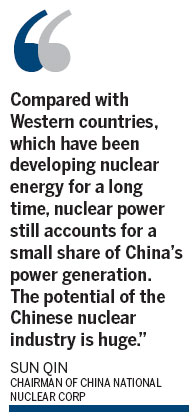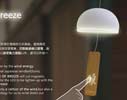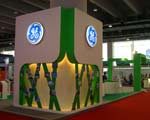Nuclear sector ready for post-Fukushima 'reasonable' rebound
By Du Juan (China Daily)
2012-11-23 07:49
|
|
China's nuclear power industry is poised to get back on track now that the government has lifted a moratorium on new nuclear projects imposed in the wake of Japan's Fukushima disaster in March 2011.
Compared with Western countries, which have been developing nuclear energy for a long time, nuclear power still accounts for a small share of China's power generation, said Sun Qin, chairman of China National Nuclear Corp, a State-owned energy company that runs more than 40 percent of China's nuclear sites.
His comments came during the 18th Communist Party Congress in Beijing on Nov 12.
"The potential of the Chinese nuclear industry is huge," he said.
According to a government white paper on energy, the country's nuclear power generating capacity accounts for 1.8 percent of all electricity generation, much lower than the average figure of 14 percent for all countries with nuclear power.
Coal still plays a big role in China's energy consumption, accounting for 70 percent of the total energy consumption mix.

Nuclear power is a key aspect of China's strategy to raise the proportion of non-fossil fuels in the primary energy mix to 15 percent and reduce carbon dioxide emissions per unit of GDP by 40 to 45 percent from 2005 levels by 2020.
Before the Fukushima disaster, China was planning rapid development in its nuclear sector, and seven inland provinces had applied to host plants.
The enthusiasm cooled after the Japan's disaster because the central government suspended new project approval last year.
On Oct 24, the State Council approved two programs, the National Plan for Nuclear Power Security (2011-20) and the Nuclear Power Development Plan (2011-20), which laid the foundations for nuclear power development in the following years.
According to these programs, China will have 40 million kilowatts of installed nuclear capacity by 2015. The country will develop the nuclear industry at a "reasonable pace".
However, the country decided not to develop inland nuclear power plants during the 12th Five-Year Plan period (2011-15). The several nuclear power projects scheduled to be launched under this plan are all located in coastal areas.
Industrial analysts said the decision was made based on security considerations regarding nuclear reactors, and in the future, China's approval process for new projects will be more deliberative.
"China may start building inland nuclear power plants during the 13th Five-Year Plan (2016-20) at the earliest," Sun said. He said the country is conducting research and risk evaluation on the construction of inland nuclear power plants, which will take time.
"It is not about the technology. In fact, China's inland nuclear power plant technology is mature," he said. "However, we lack experience with inland projects, and the public needs time to warm up to the idea."
dujuan@chinadaily.com.cn






